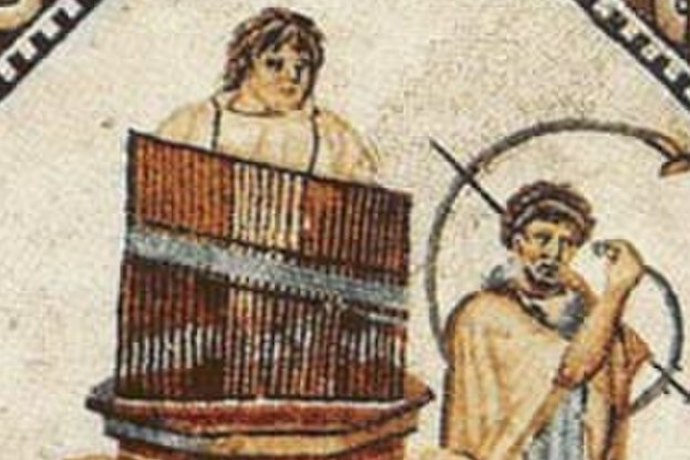By Amy Kilroy
All of us are familiar with the guitar, the piano and the drum. But how about their forerunners? Here are five unique ancient instruments, whose modern day counterparts use in our everyday lives.

The Xun and Chi
Kicking off our survey of instruments: one of the most popular in ancient China, the Xun was a type of vessel flute made of pottery clay often depicting animals on its case. An egg-shaped instrument, the xun was often used in ritual ensembles, and its influence on the modern-day flute is self-evident.
In literary sources, the Xun was often paired with the Chi (another similar transverse flute relic made from bamboo), sharing a familial brotherly bond. As the Confucian Shijing says: ‘The older brother played the xun and the younger brother played the chi.’
The Shawms and Oboes
Throughout the Middle Ages, the shawm was made with single or double reeds and was common throughout Europe after having likely been introduced during the Crusades. Often used in dance ensembles and court ceremonies, it was one of the most important loud instruments of its tim. Euripedes even called it the ‘servant of the muses.’
From this developed the oboe: a double-reed woodwind instrument that is somewhat harder to play, with smaller bore, bell and finger holes than the shawm.
The Hydraulis and pipe organs
The first keyboard musical instrument and the ancestor of the modern church organ, the hydraulis was invented by Ctesibius of Alexandria in the 3rd Century B.C. It worked by creating pressurized air using the weight of water and was so popular that even the Emperor Nero allegedly had one installed in his palace.
Eventually, it evolved into the modern day Pipe organ, which, unlike the hydraulis, uses a wind system, not a water reservoir, to control air pressure.
The Sarangi and the violin.
A short necked, bowed fiddle heard in Hindustani music, the sarangi is a popular instrument in folk music due to not only its close resemblance to the human voice, but also its versatility. It consists of three main strings, and a fourth that supplies the drone.
The sarangi is often thought of as an ancient Indian equivalent to a violin/cello hybrid, and is similarly played with a boy. Unlike the violin, though, it is held with the sound chamber below the playing arm.
The bones and the castanet
One of the oldest instruments in the world, if not the oldest, bones are likely to date as far back as 3000 BC, and are said to have been played back in Egypt, Greece, Rome, China and many other countries. Although some were made from real cow and lamb bones, more recent examples are actually made from wood and plastic.
Smaller percussion instruments such as the castanet are likely to have been born out of the bone family, often consisting of two hollowed-out pear-shaped pieces of hardwood, ivory or any other substance hinged together by a chord.
The Bull-Roarer and Kazoo
Last on our list of ancient instruments: with origins dating back to the Palaeolithic period, the bull-roarer is a flat piece of wood that produces a howling/whirring sound when whirled through the air. It is documented as having had ritual significance in places such as Australia and South America, its tone symbolising the presence of ancestral spirits. It was also thought to drive away sickness and promote fertility in animals.
One could argue that the bull-roarer itself was a predecessor of the kazoo, and not only because of the streamlined shape they share: as their ritualistic function became redundant, bull-roarers came to be used more as toy and novelty items, much, of course, like the kazoo. Which wraps our tour of ancient instruments